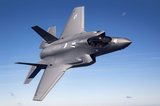US disinvites China from Pacific military exercises
The Pentagon has pulled its invitation for China to join maritime exercises in the Pacific because of Beijing's ‘continued militarisation’ of the South China Sea, an official said on 23 May, in the latest sign US-China strains.
The US Navy organises a biennial exercise called ‘Rim of the Pacific’ (RIMPAC) in which personnel from more than two dozen countries train together and work on seamanship across the vast region.
But the US now thinks China's behaviour in the South China Sea runs counter to the spirit of the drills.
Lieutenant Colonel Chris Logan, a Pentagon spokesman, said: ‘China's continued militarisation of disputed features in the South China Sea only serve to raise tensions and destabilise the region.
‘We have disinvited the PLA Navy from the 2018 Rim of the Pacific Exercise. China's behaviour is inconsistent with the principles and purposes of the RIMPAC exercise.’
He said the Pentagon has strong evidence that China has deployed anti-ship missiles, surface-to-air missile (SAM) systems and electronic jammers to ‘contested features’ in the Spratly Islands region of the South China Sea.
Logan said: ‘While China has maintained that the construction of the islands is to ensure safety at sea, navigation assistance, search and rescue, fisheries protection, and other non-military functions the placement of these weapon systems is only for military use.’
He added that the landing of a Chinese bomber on Woody Island had only exacerbated tensions.
RIMPAC began in 1971 and was held annually until 1974, when it switched to every two years due to its large scale.
The founding nations are the US, Australia and Canada. China has participated twice previously, in 2014 and 2016.
More from Defence Notes
-
![Canada set to look away from its neighbour and across the Atlantic for partners]()
Canada set to look away from its neighbour and across the Atlantic for partners
While non-EU UK struggles to join the Security Action for Europe initiative, which provides loans for defence programmes, Canada has become the first country outside Europe to get access – and did so for a nominal fee.
-
![NATO experiments with solutions to integrate networks, AI and uncrewed systems]()
NATO experiments with solutions to integrate networks, AI and uncrewed systems
During the latest edition of the NATO DiBaX, the alliance tested multiple capabilities to inform requirements for future efforts.
-
![Leonardo unveils plans for Michelangelo air defence dome]()
Leonardo unveils plans for Michelangelo air defence dome
The new multi-layered defence system will harness AI to neutralise airborne threats and protect Europe from Russian aggression.























